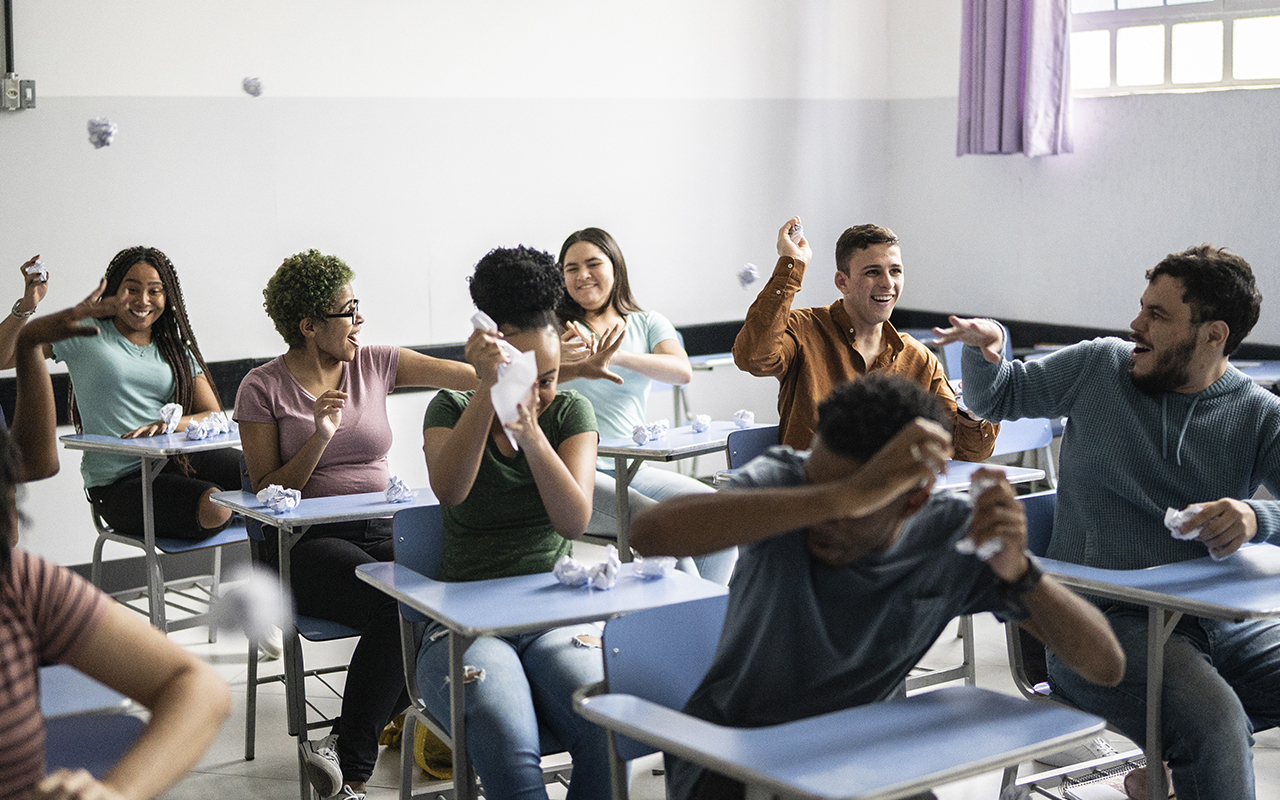It can also be a very challenging career choice as well. Lots of grading and paperwork, planning and communicating with parents – often after hours – can be a drain mentally and physically. But the biggest challenge of all is managing an unruly classroom.
Enter the acronym PBIS to the rescue. Positive behavior supports and interventions (PBIS) are strategies you can use to improve student behavior. The PBIS framework provides proven interventions that can transform poor classroom behavior into a positive environment where all students can succeed. It’s a multi-tiered system of supports and interventions that allow you to help all students learn and be productive, regardless of their needs.
The PBIS framework is broken down into three tiers:
Tier 1 focuses on most students (approximately 80%) and addresses positive behaviors that are established schoolwide. Examples include ensuring students walk calmly in line, and that they throw away their own trash in the cafeteria. Once Tier 1 behaviors are learned, negative behaviors lessen, and teachers spend less time focusing on discipline and more on positive instruction.
Tier 2 focuses on the subset of students (approximately 15%) who are struggling with the Tier 1 interventions and supports. The strategy is to try and identify the root cause such as social, emotional or academic issues that lead to their poor behavior at school, and then provide the support needed to change those behaviors.
Tier 3 focuses on the students (approximately) that can’t be reached through the Tier 2 supports and therefore represent high-risk behavior. Tier 3 interventions typically involve a personalized plan with input from special education teachers and/or school psychologists and are designed to gradually reduce the severity of the ongoing behavior issues.

Examples of positive behavioral interventions
Once you have identified the challenging behaviors, the next step is to implement positive behavioral interventions. Here are some examples of PBIS interventions that you can use in your classroom to nurture a warmer, friendlier classroom.
Routines Both in school and in life, routines are one of the best stress-avoidance techniques out there. When you set clear routines in your classroom, you’re creating order and providing an environment that is consistent and predictable. In executing on your classroom routines, be clear in your expectations, practice and reinforce expected behaviors and outline the consequences of not following the routines.
Breaks We all need breaks. In the workplace, a 2014 study by Staples found that more than 85% of employees believed taking regular breaks during the day would actually boost their productivity. Students need breaks, too. Constantly learning and digesting new information is quite draining, and this can lead to poor behavior choices. Try incorporating a three- to five-minute break a couple of times a day to give your students a “time out” so they can reset and refocus. A breathing or movement exercise could be just what they need to help them focus better on the next lesson.
Praise and reward The best way to avoid having to spend time disciplining students who are behaving badly? Nip it before it buds and acknowledge good behavior instead. For example, “great job everyone for entering class today in a quiet and orderly fashion” to encourage healthy morning routines. You can also introduce a reward system to incentivize and reward good behavior by individuals, groups and the entire class. Use a system that openly tracks good behaviors, features attainable goals and pre-set rewards. For younger students, erasers and stickers make great rewards while older students will feel motivated when they receive an extra break or extended lunch. Snow Cloud’s Replicated Reality platform also includes a classroom management module that features a token economy students can use for rewards.
Have fun Nothing keeps kids out of trouble like a strategic dose of fun in the classroom. Entertaining, interactive lessons will inspire them in different ways and encourage healthier peer-to-peer connections. Take a lesson plan and figure out a way to turn it into a fun game or activity like a TV game show or an experiential activity. This approach can transform a difficult task that may trigger certain students with behavioral issues into something the whole class can enjoy and feel positively about.

Ultimately, managing an unruly classroom entails patience and planning, but through trial and error you will find the behavior management style that works for both you and your students. Contact us today to learn more about our Replicated Reality’s classroom management module and other classroom management strategies.

